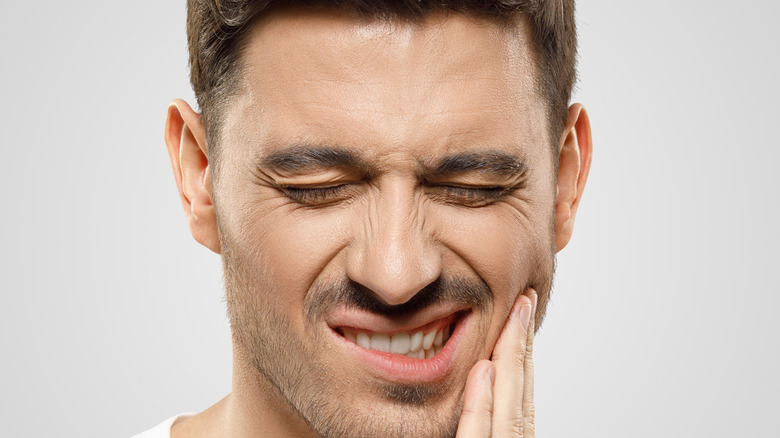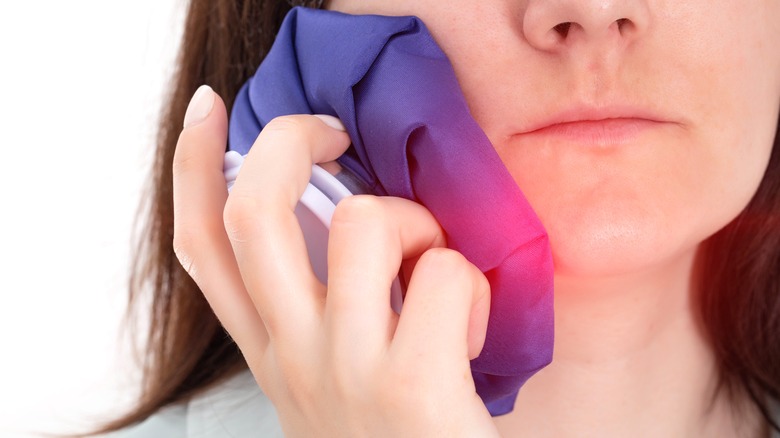If Your Jaw Hurts When You Eat, This Is Why
If you find you're experiencing jaw pain during your meals, it might simply be the result of accidentally crunching down on a hard seed or shell. In some cases, however, the kind of jaw pain may not be food-related. Instead, jaw pain while eating might be a sign of a medical condition.
Jaw soreness experienced while eating can be indicative of a disorder of the temporomandibular joint (TMJ), otherwise called TMD, or temporomandibular disorder (via Atlanta West Dentistry). Fastening the jawbone to your skull, the temporomandibular joint is what gives your jaw its range of motion. For those with TMD, moving one's jaw can be painful, especially while chewing. Additional symptoms can include popping sensations, headaches, tenderness, pain around the ears, and difficulty opening and closing the jaw, sometimes referred to as lockjaw.
Mouth injuries, arthritis, or stress responses, such as teeth grinding, clenching, lip chewing, or resting your jaw in your hand can all cause TMD pain (via Penn Medicine). If you're experiencing jaw discomfort, there are ways to manage pain symptoms through daily habits and wellness practices.
Methods to relieve jaw pain
According to the National Institutes of Health (NIH), an estimated 10 million people in the U.S. are affected by temporomandibular joint pain. "While most TMD symptoms resolve in a few weeks to months, some painful conditions can be aggravated by certain behaviors or harmful habits that strain jaw and neck muscles," Diana Hearn, leader for the Musculoskeletal team and Temporomandibular Disorders (TMD) Program at Penn Therapy & Fitness, told Penn Medicine.
According to Penn Medicine, certain daily practices may prove helpful in relieving jaw discomfort, such as utilizing a hot or cold compress to reduce swelling and relax the muscles. Additionally, engaging in regular jaw exercises, such as stretching, strengthening, and relaxing the muscles may help increase joint mobility. You'll also want to take note of when you notice yourself holding tension in the jaw. For example, consciously unclenching your teeth and returning your jaw to its resting position can help relieve pain. Maintaining upright posture and avoiding wide jaw movements, such as while singing or yawning, can also relieve discomfort.
For more debilitating cases in which speech is affected, scientists are exploring potential treatment options through tissue engineering to replace damaged or diseased tissue in the temporomandibular joint (via Advanced Healthcare Materials). While research is still in the early stages, with these advancements, scientists hope to provide alternative treatment options for the disorder that go beyond current limited treatments.


